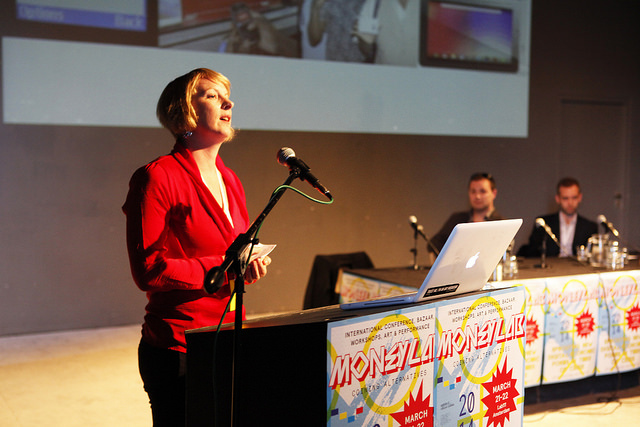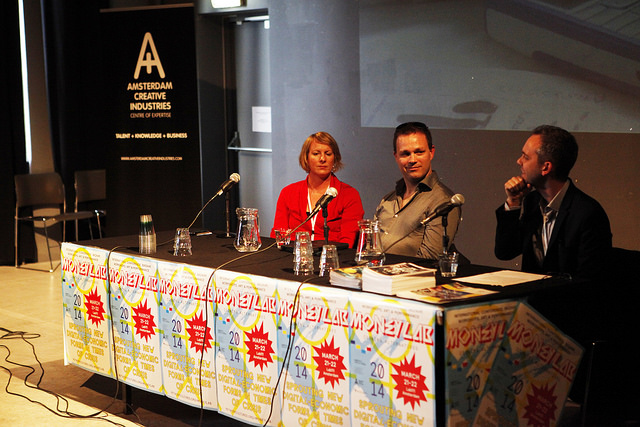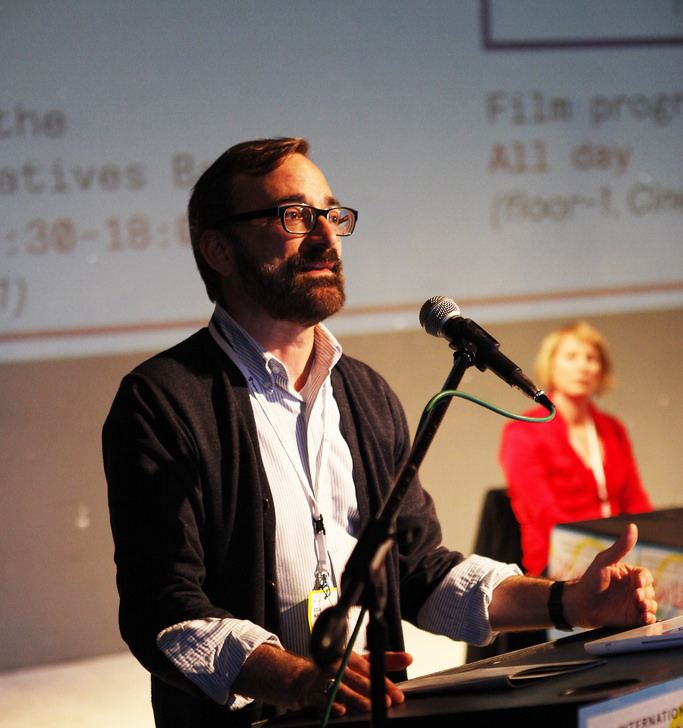Bill Maurer moderated the fourth session of MoneyLab on mobile money. He introduced the topic as growing out of a grassroots movement in sub-Saharan Africa, when people who were using pre-paid mobile phones realized they could send airtime to each other via phones as an alternative currency, and as a mechanism of settling debts, amongst other things. He argued that the mobile industry later took note of this and industry professionals soon travelled to Kenya and Uganda to investigate the on-the-ground reality. What this meant in the lives of the poor and how it helped shape an entire research agenda into mobile devices and airtime system are some of the questions he initially posed.
The session’s first speaker, Erin B. Taylor, also began her talk with the following two questions: ”Is mobile money a social good?” and “What kinds of alternatives might mobile money provide?” In order to answer these questions, she touched upon the mobile phone research that has been conducted in the Haiti crisis since 2010. In the aftermath of a major earthquake, as a country that has witnessed multiple political crises, Haiti is not the kind of place you think about when discussing cutting edge technology. However, after the earthquake struck, there was a massive drive to develop technology. The most prominent of those was mobile money, developed as a way to send money soon after the earthquake, as traditional banking infrastructure had proved unreliable. Mobile money is an alternative way to transact money and provides new options to people who previously had to depend on traditional financial services or expensive remittance agents. However, it differs from alternative currencies and non-monetary systems as it is not rebellious in nature, and in fact integrates people into the current financial system, instead of excluding them.

Erin B. Taylor presenting at MoneyLab
Yet who are its typical users? In the case of the Kenyan M-PESA, is it the elderly women or the young, the rural or the more urban areas? How are they using it, and what can we learn from how they are using it? In the early days of mobile money however, the typical user in Haiti was in fact an NGO. The people using and demanding it were organizations such as MercyCorps, WorldVision, and PathFinder, who all used mobile money to pay salaries to health workers, amongst other things. This user group initially made up the core demand for mobile money.

The full Mobile Money panel incl. Gawain Lynch and Taylor Nelms
The supply side of mobile money was financed by commercial and non-commercial stakeholders. For USAID, mobile money is used for a variety of different things and acts as a platform to pay salaries and offer credit for instance. In terms of the commercial side, Digicel were large proponents of mobile money in Haiti and wanted to make a profit from the technology. Here, the boundary between social and profit becomes blurred, as people in Jamaica for example, where Digicel offers products to people with little spending power, see Digicel as a company that is not out to take their money, but one that provides more social benefits then NGOs and the government. The role switches, and mobile money becomes an “extension of corporate and social responsibilities”. Concluding her talk, Taylor asked how can we think as mobile money as providing a social good? Well, mobile money provides alternatives to the need of travelling and the safe keeping of money. However, mobile money is not a substitute for the financial system and Taylor further stated that any assessment of the social benefits of mobile money first needs to examine the incentives that different stakeholders have to use mobile money, as well as how it fits into a macroeconomic picture.
Both commercial and non-commercial stakeholders finance the supply-side of mobile money. For USAID, mobile money is used for a variety of different things. For example, it acts as a platform to pay salaries and offer credit. In terms of the commercial side, Digicel were large proponents of mobile money in Haiti and wanted to make a profit from the technology. Here, the boundary between social and profit becomes blurred, as people in Jamaica for example, where Digicel offers products to people with little spending power, see Digicel not as a company that is out to take their money, but one that provides more social benefits than the NGOs and the government do. The role thus switches, and mobile money becomes an “extension of corporate and social responsibilities”.
Concluding her talk, Taylor asked how could we think of mobile money as providing a social good? For example, mobile money provides alternatives so that people need not travel long distances to make transfers or keep money on themselves to make it safe. However, mobile money is not a substitute for the financial system and Taylor further stated that any assessment of the social benefits of mobile money first needs to examine the incentives that different stakeholders have to use mobile money, as well as how it fits into a macroeconomic picture.



